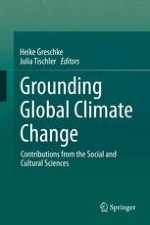2015 | OriginalPaper | Buchkapitel
6. Animal Belongings: Human-Non Human Interactions and Climate Change in the Canadian Subarctic
verfasst von : Claudia Grill
Erschienen in: Grounding Global Climate Change
Verlag: Springer Netherlands
Aktivieren Sie unsere intelligente Suche, um passende Fachinhalte oder Patente zu finden.
Wählen Sie Textabschnitte aus um mit Künstlicher Intelligenz passenden Patente zu finden. powered by
Markieren Sie Textabschnitte, um KI-gestützt weitere passende Inhalte zu finden. powered by
